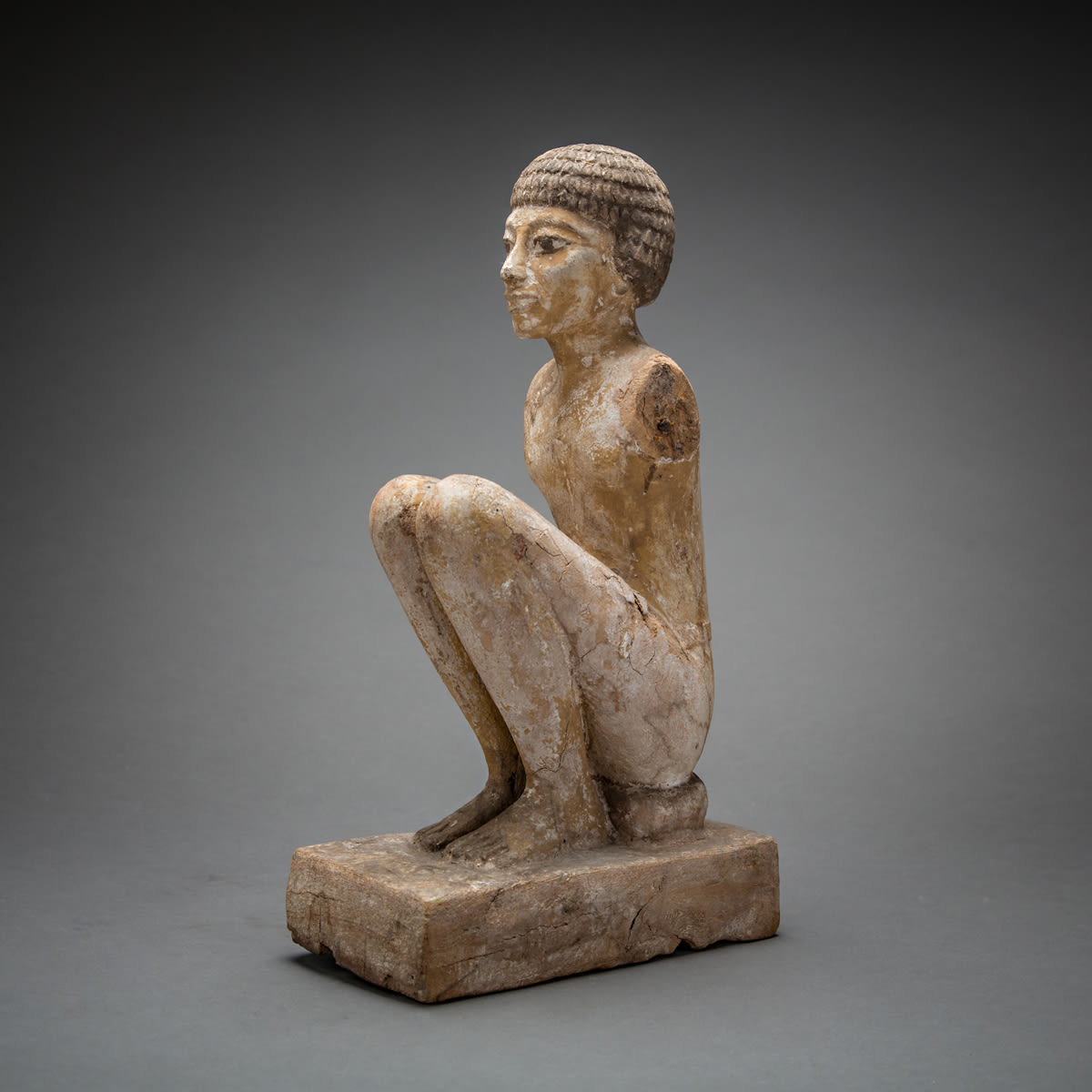Ancient Egyptian wooden statue of a seated male, 600 BCE - 300 BCE
Wood
36.1 x 21.6 cm
14 1/4 x 8 1/2 in
14 1/4 x 8 1/2 in
PH.0138
Further images
The majority of three-dimensional representations of ancient Egyptian statues, whether standing, seated, or kneeling, exhibit an evident frontality. When such statues are viewed in isolation, out of their original context...
The majority of three-dimensional representations of ancient Egyptian statues, whether standing, seated, or kneeling, exhibit an evident frontality. When such statues are viewed in isolation, out of their original context and without any knowledge of their function, they appear to maintain a rigid attitude and a stance far from naturalistic. Frontality is, however, directly related to the functions of Egyptian statuary and the context in which the statues were erected. Statues were created not for a decorative purpose but to play a primary role in the cults of the gods, the king, and the dead. They were designed to be assigned to occupy specific spots where these beings could manifest themselves in order to be the recipients of ritual actions. Thus, it made complete sense to represent the statue in a frontal position, so that the living performer of the ritual could interact with the divine or deceased recipient. Very often such statues were enclosed in rectangular shrines or wall niches only open and visible at the front. Other statues were created as to be placed within a precise architectural setting, for instance, in front of the monumental entrance gateways to temples complexes or within pillared courts, where they would be placed against or between such pillars. In these latter cases their frontality again worked perfectly within the architectural context.
Statues in ancient Egypt were normally made of stone, wood, or in some cases of metal. Stone statues were worked from single rectangular blocks of material and retained the compactness of the original shape. By contrast, wooden statues were carved from several pieces of wood that were pegged together to form the finished work. Apart from statues representing deities, kings, and named members of the ruling elite, there are also three-dimensional representations that depict generic figures, frequently servants. The function of such statues is quite different. Many were created to be placed in the tombs of the higher classes, in order to serve the tomb owners in the afterlife.
Statues in ancient Egypt were normally made of stone, wood, or in some cases of metal. Stone statues were worked from single rectangular blocks of material and retained the compactness of the original shape. By contrast, wooden statues were carved from several pieces of wood that were pegged together to form the finished work. Apart from statues representing deities, kings, and named members of the ruling elite, there are also three-dimensional representations that depict generic figures, frequently servants. The function of such statues is quite different. Many were created to be placed in the tombs of the higher classes, in order to serve the tomb owners in the afterlife.







